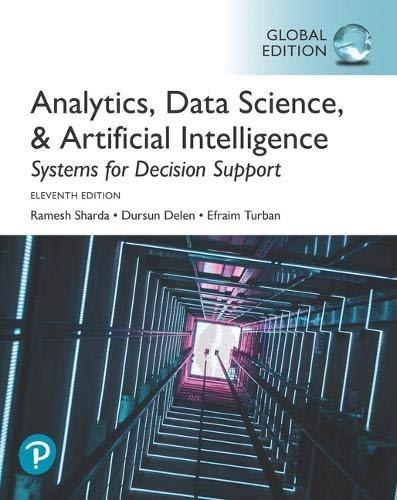The Pennsylvania Adoption Exchange (PAE) was established in 1979 by the State of Pennsylvania to help county
Question:
The Pennsylvania Adoption Exchange (PAE) was established in 1979 by the State of Pennsylvania to help county and nonprofit agencies find prospective families for orphan children who had not been adopted due to age or special needs. The PAE keeps detailed records about children and preferences of families who may adopt them. The exchange looks for families for the children across all 67 counties of Pennsylvania. The Pennsylvania Statewide Adoption and Permanency Network is responsible for finding permanent homes for orphans. If after a few attempts the network fails to place a child with a family, they then get help from the PAE. The PAE uses an automated assessment tool to match children to families.
This tool gives matching recommendations by calculating a score between 0 and 100 percent for a child on 78 pairs of the child's attribute values and family preferences. For some years now, the PAE has struggled to give adoption match recommendations to caseworkers for children. They are finding it difficult to manage a vast database of children collected over time for all 67 counties. The basic search algorithm produced match recommendations that were proving unfruitful for caseworkers. As a result, the number of children who have not been adopted has increased significantly, and there is a growing urgency to find families for these orphans.
Methodology/Solution
The PAE started collecting information about the orphans and families through online surveys that include a new set of questions. These questions collect information about hobbies of the child, child- caseworker preferences for families, and preference of the age range of children by families. The PAE and consultants created a spreadsheet matching tool that included additional features compared to the previously used automated tool. In this model, caseworkers can specify the weight of the attributes for selecting a family for a child. For example, if a family had a narrow set of preferences regarding gender, age, and race, then those factors can receive a higher weight. Also, caseworkers can give preference about the family's county of residence, as community relationship is an important factor for a child. Using this tool, the matching committee can compare a child and family on each attribute, thus making a more accurate match decision between a family and a child.
Results/Benefits
Since the PAE started using the new spreadsheet model for matching a family with a child, they have been able to make better matching decisions. As a result, the percentage of children getting a permanent home has increased. This short case is one of the many examples of using spreadsheets as a decision support tool. By creating a simple scoring system for a family's desire and a child's attribute, a better matching system is produced so that fewer rejections are reported on either side.
Questions for Discussion
1. What were the challenges faced by PAE while making adoption matching decisions?
2. What features of the new spreadsheet tool helped PAE solve their issues of matching a family with a child?
Step by Step Answer:

Analytics Data Science And Artificial Intelligence Systems For Decision Support
ISBN: 9781292341552
11th Global Edition
Authors: Ramesh Sharda, Dursun Delen, Efraim Turban





